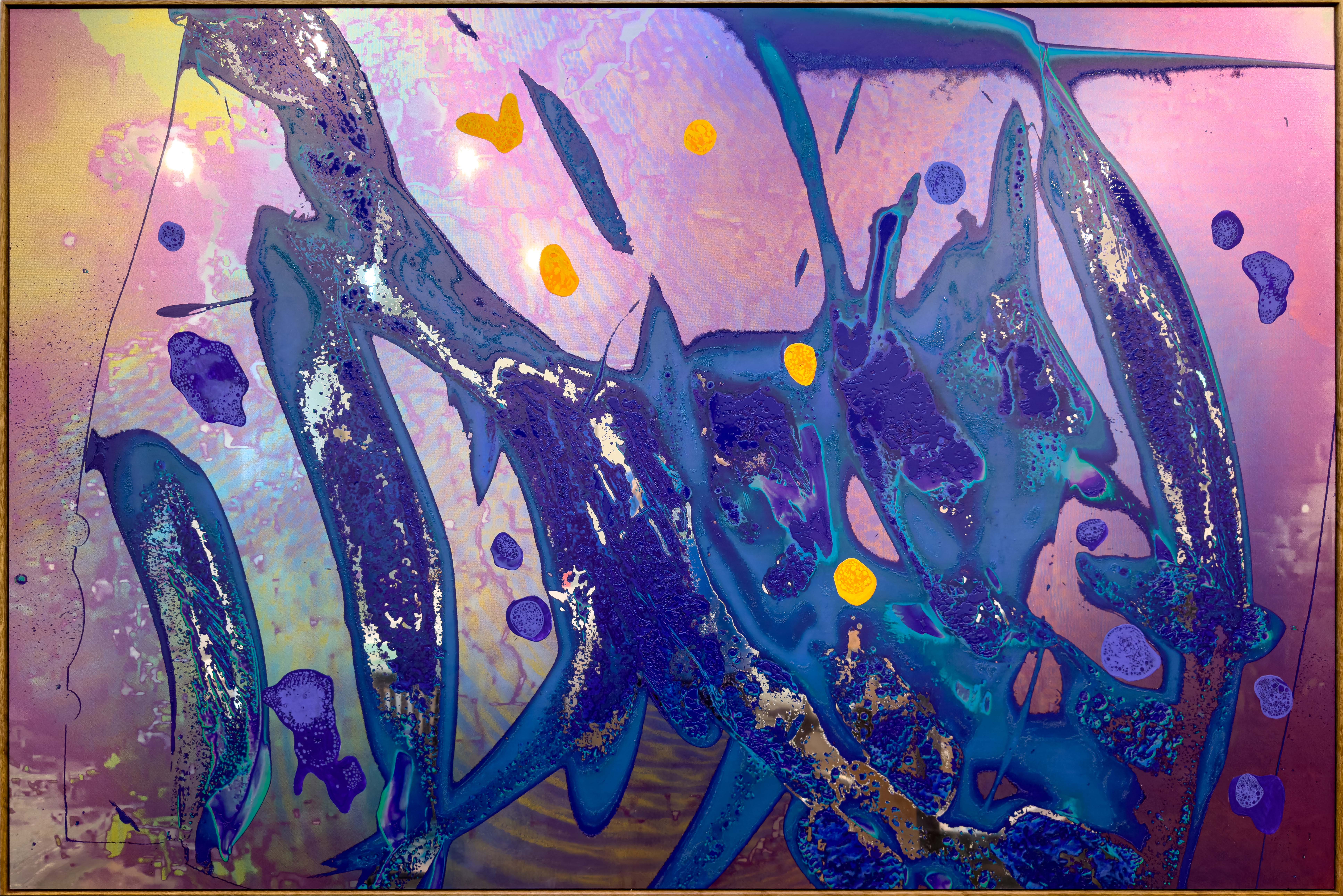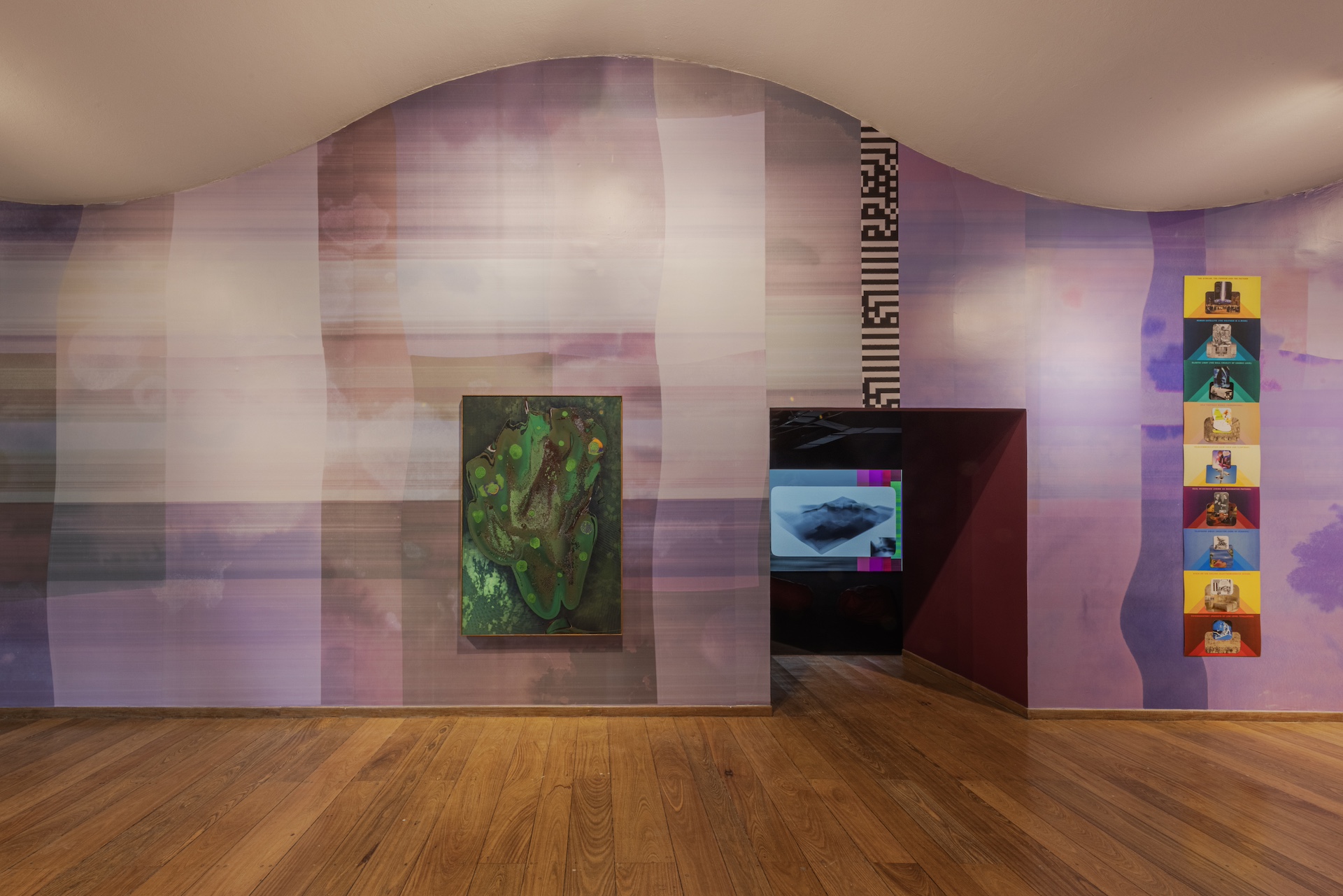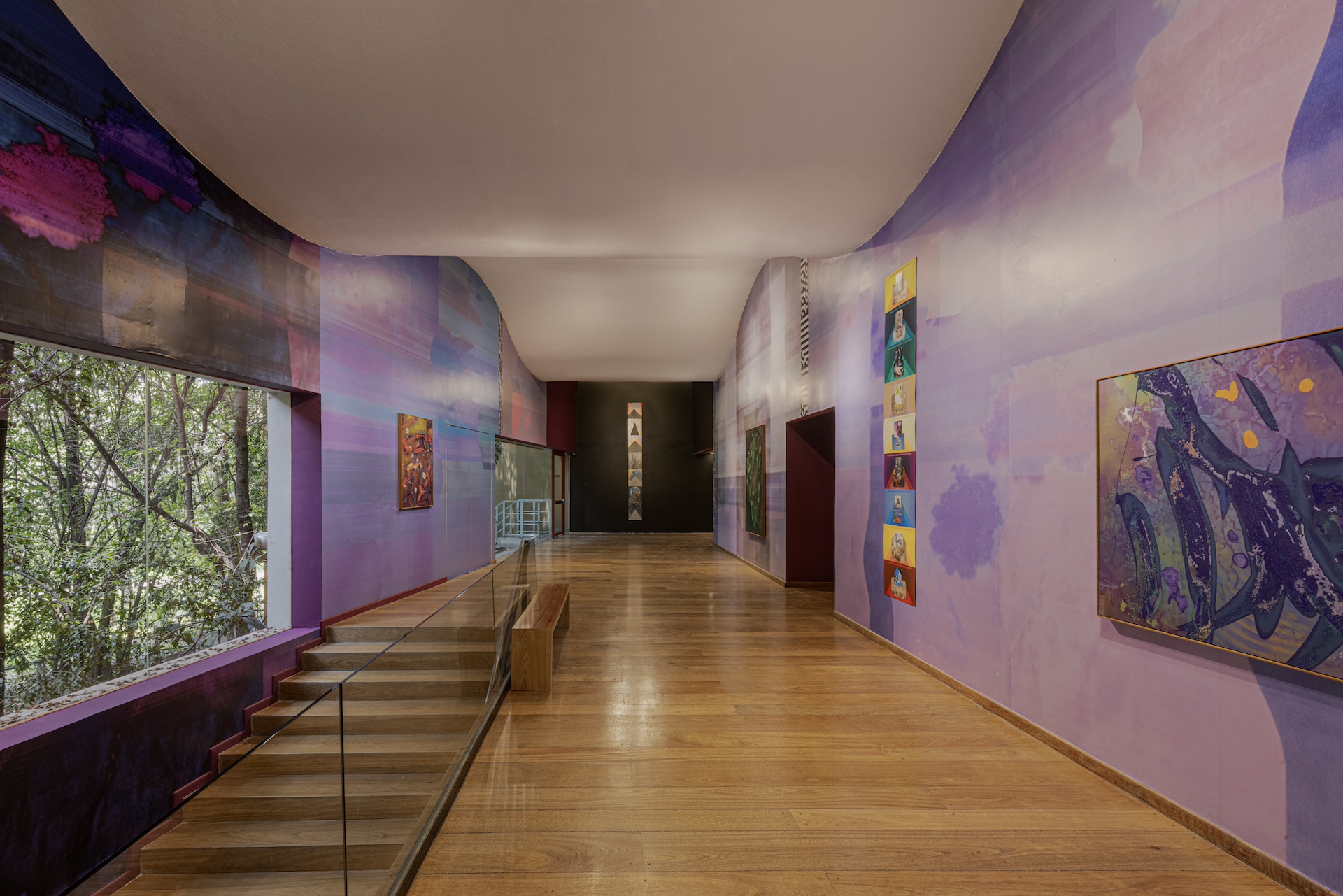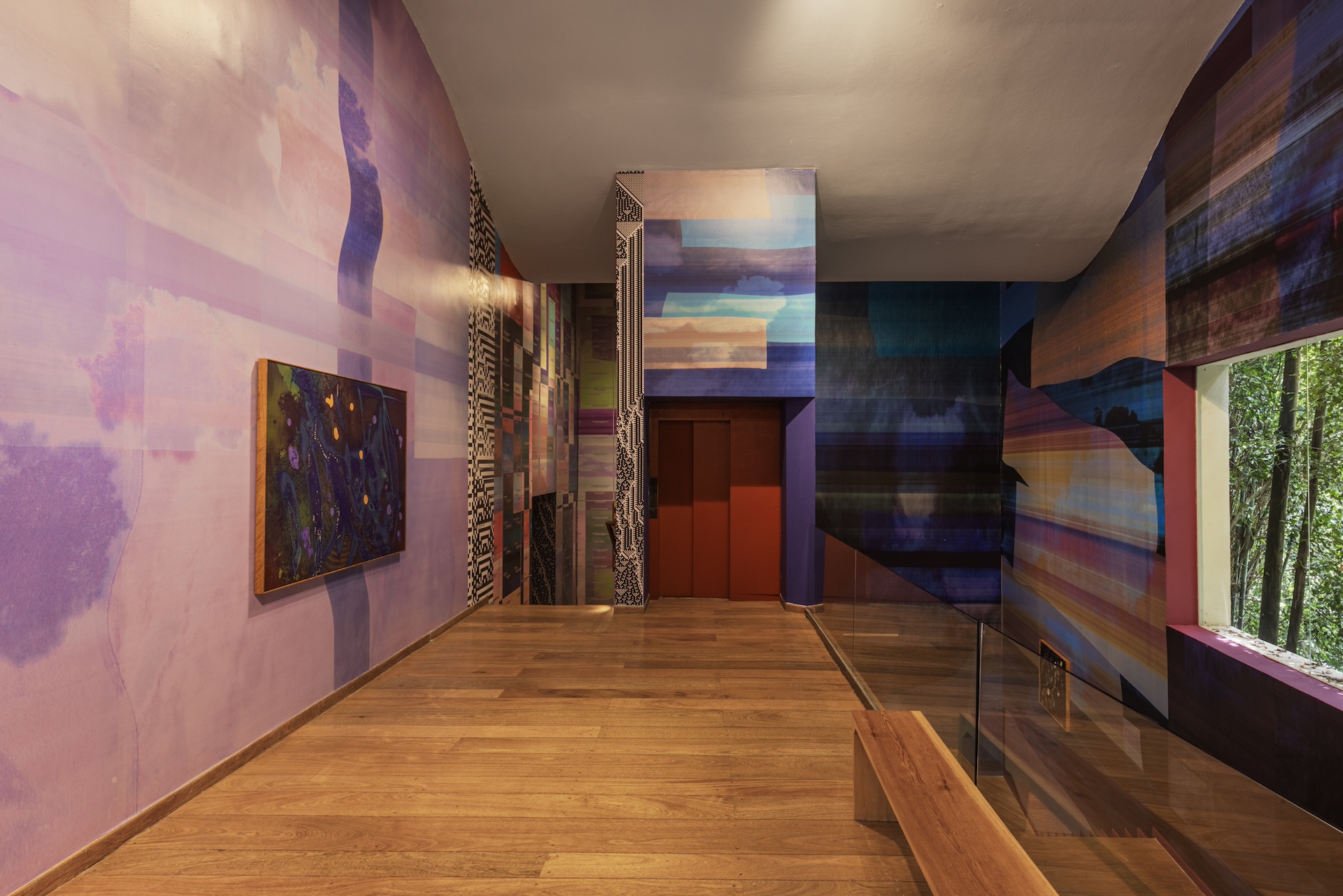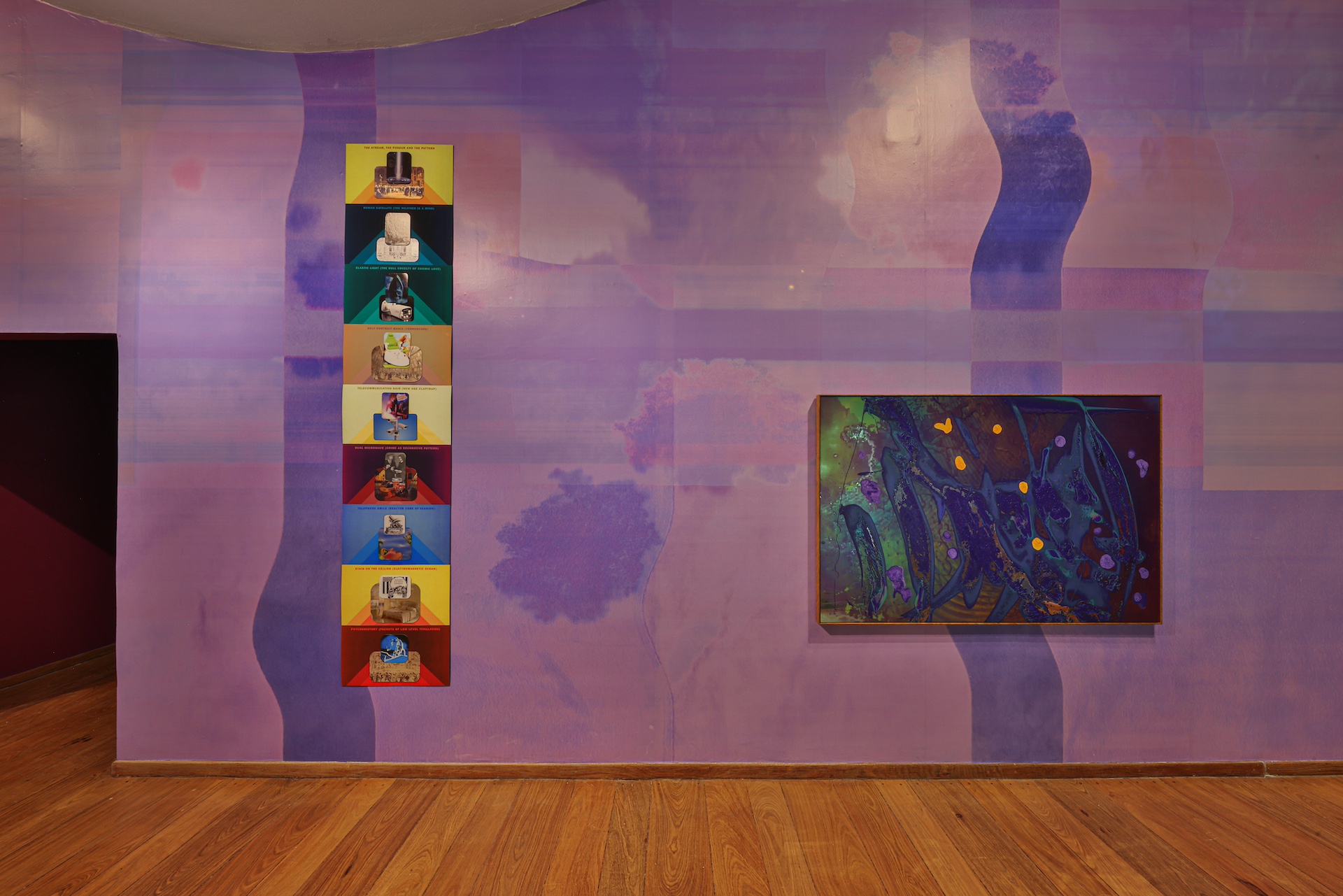
Jonah Freeman: Soft Math (Cloud in The Eyes)
Curated by
No items found.
Jonah Freeman
UPCOMING
6/9/2025
-
-
4/1/2026
Soft Math (Cloud in the Eyes) is the first solo exhibition in Latin America by New York-based artist Jonah Freeman, whose practice merges experimental narrative, material abstraction, and cinematic logic to explore the hidden infrastructures of contemporary life—technological, cultural, and perceptual.
The exhibition unfolds as a series of densely layered environments across LagoAlgo’s spaces. Here, Freeman continues his nearly 20 year long exploration of image making through his series “The Brick Paintings.” In these works, images captured by drones—man-made machines observing man-made environments—are distorted through intentional color placement and transferred onto mirror-polished surfaces that reflect the viewer back to themselves. Freeman then incorporates layers of oil paint, high-gloss varnish, UV-cured ink, melted photographic film, and aged celluloid, creating surfaces that evoke chemical reactions or cellular formations—strangely human, yet entirely machine-aided.
“In a moment where we are constantly navigating the blurred boundaries between the artificial and the organic, the digital and the real, Freeman’s practice mirrors the anxiety and fascination of our time. His works serve as reflective instruments—both literally and conceptually—forcing us to confront the shifting nature of perception, authorship, and what it means to be human in a world increasingly shaped by machines.” said Carolina Alvarez-Mathies, LagoAlgo’s Artistic Director.
These works are enveloped in a massive installation of color-coded wall coverings that appear as if processed through a corrupted scanner—distorted, degraded, and fragmented. The wall coverings render the architecture itself into a kind of malfunctioning info-graphic, where spatial contours dissolve into warped data fields. These surfaces echo the melted celluloid textures of the paintings and respond to the irregular geometries of the space itself. Freeman also debuts Soft Math (Cloud in the Eyes), a new collage film composed from original and found footage, accompanied by his signature storyboard sketches—a visual language that maps the construction of his films and reveals the sources of inspiration behind his paintings.
Jonah Freeman: Soft Math (Cloud in the Eyes) is presented with the generous support of Grupo Habita.
For this exhibition, we invited Joshua Citarella—artist, internet culture writer, host of Doomscroll, and founder of Do Not Research in New York—to contribute an essay reflecting on Jonah Freeman’s work. We are pleased to share it with you below.
Artificial intelligence used to render smudgy and distorted reflections of the world. Today, it produces hyper-realistic 4k video with indiscernible fidelity. This newfound clarity of machinic vision seems to correspond to a deeper irrationality on behalf of human beings—we find ourselves shrouded in evermore conspiratorial and mystical ways of seeing the world. Machines now appear to think as men have lost the capacity for reason.
What were previously questions of software and computation have long since spilled over into politics and philosophy. Digitization has seeped into every aspect of life. Images have begun to shape a new reality. As we repattern the world in our own image, these transformative tools blur traditional western distinctions between man and nature. Old categories are beginning to collapse as we uncover deeper layers of complexity. As a popular online meme suggests, “The whole age of computer has made it where nobody knows exactly what’s going on.”
In Jonah Freeman: Soft Math (Cloud in the Eyes), artist Jonah Freeman explores the ways in which our increasingly technological world has transformed our understanding of nature, the built environment and even of ourselves. Throughout two essayistic films, Decor Slip and Soft Math (Cloud in the Eyes), Freeman blends scientific expertise with an alchemical curiosity that asks us to reframe conventional notions of the technological and the natural. The artist invites us on a psychedelic exploration into the emergence of complex patterns and new forms of intelligence. Freeman asks; Is the human mind itself a pattern? Can consciousness be replicated or similarly built upon? Like the stream that became the road that became the city that became the internet, we wonder; what might follow after us?
In 2022, astronomers achieved the first recorded image of a black hole. The iconic picture is not a traditional photograph but is itself a product of computation. It is assembled from vast amounts of data rendered into a visual form. To record objects that are extremely distant or dimly lit, one needs a camera with an incredibly large aperture. To accomplish this, researchers constructed a virtual telescope, composed of a series of interconnected radio observatories from across the world in which the surface of earth itself becomes a camera.
Planetary-scale computation, a term first coined by philosopher of technology Benjamin Bratton, describes our interconnected systems of software and hardware, from the natural to the built environment, that operate on a global, earth-wide scale. Through this historic act of image production, the technological revolution has become co-constitutive with ecology.
Cutting edge technologies are retracing primordial patterns forged over deep time. The further we speed up these cycles, the more apparent their underlying models become. As stream beds patiently carve their path through wild terrain, they open up a space for local animals to traverse through dense foliage. This clearing of the brush makes way for human footpaths and later for herds of livestock. Over centuries, these farmers' paths become trade routes. Soon, cobblestones give way to paved roads and eventually to urban super highways. Alongside these ancient stream beds we now bury miles of fiber optic cable that further increase the speed of our exchanges.
The exhibition is composed from different bodies of work; in Storyboard Collages, Freeman generates new and improbable scenarios that seek to cover a wide spread of future possibilities. Back in the 1950’s, Herman Kahn of the Rand Corporation, introduced the innovative technique of scenario planning, a strategic process by which researchers could derive multiple speculative outcomes. In our increasingly uncertain times, these forecast exercises help to prepare us for a range of complex and emergent cultural phenomena. We attempt to get ahead of an unfolding process and to anticipate where it might lead.
Brick Paintings utilize redundant methods of technical reproduction, from drone cameras, to film, to screens, to monoprints and more. These granular distortions are then layered with varnish or oil paint and juxtaposed with abstract chemical reactions to challenge our traditional notions of the technological and the natural. Their substrate, mirror-polished aluminum, reflects the viewer and fractures their visual field, turning the paintings into both object and lens.
As early as 1983, media theorist and evolutionary philosopher, Vilem Flusser forewarned us that mankind was encircled by a universe of technical images. Today, our tools stand between us and the natural world as we might have known it. Online roleplay has become political reality. Smart cities have grown into symbiotic sensing organisms that see, hear and feel like a living body. Urban planning has co-evolved to become a criss-crossed global grid of data centers. Cables wrap across the earth’s surface, running underground and below the sea. The planet itself has sprouted a technological exoskeleton of satellite relays that reflect signals back down to the inhabitants below. Across our digital communication networks, electronic surges of attention pulse and spike a metabolic network of image creators and consumers. From interlinked mobile devices, we perform choreographed rhythmic dance sequences where our physical bodies become animated by digital algorithms. Our hallucinatory fictions now reshape the material world to conform with its technical image. “Everything’s computer!”
In Jonah Freeman: Soft Math (Cloud in the Eyes), Jonah Freeman evokes a logic that is neither strictly computational nor purely organic. This pliable and generative order mirrors the ambiguous terrain of our hyperconnected world. The notion echoes the work of John Von Neumann’s Cellular Automata, in which complex, lifelike behaviors emerge from simple digital rules. Pixels flicker on and off, forming new structures that suggest evolution, and even intelligence. These emergent patterns complicate the boundaries between chaos and order, collapsing the binary of synthetic and organic. Freeman reveals a world where computation no longer imitates nature—it becomes indistinguishable from it.
READ MORE
CLOSE
